Fiji is one of those South Pacific Islands that evoke an exotic tropical paradise. And it really was! It doesn’t take much promotion to make this an inviting travel destination whether you’re on a honeymoon or a family vacation. Read about 25+ interesting things including what to do in Fiji.

I didn’t know too much about Fiji before going there but we certainly learned a lot of interesting and unique things about this country while researching before our trip and during our short visit.
1. BULA everywhere! Let me start off with BULA which means “Hello”. We heard this from the moment we stepped on the plane until we left and was how the Fijians repeatedly greeted everyone.
They also said it with a lot of enthusiasm and with genuine smiles. Some locals asked us to repeat it loudly if it didn’t meet their satisfaction in the enthusiasm and earnest gauge.
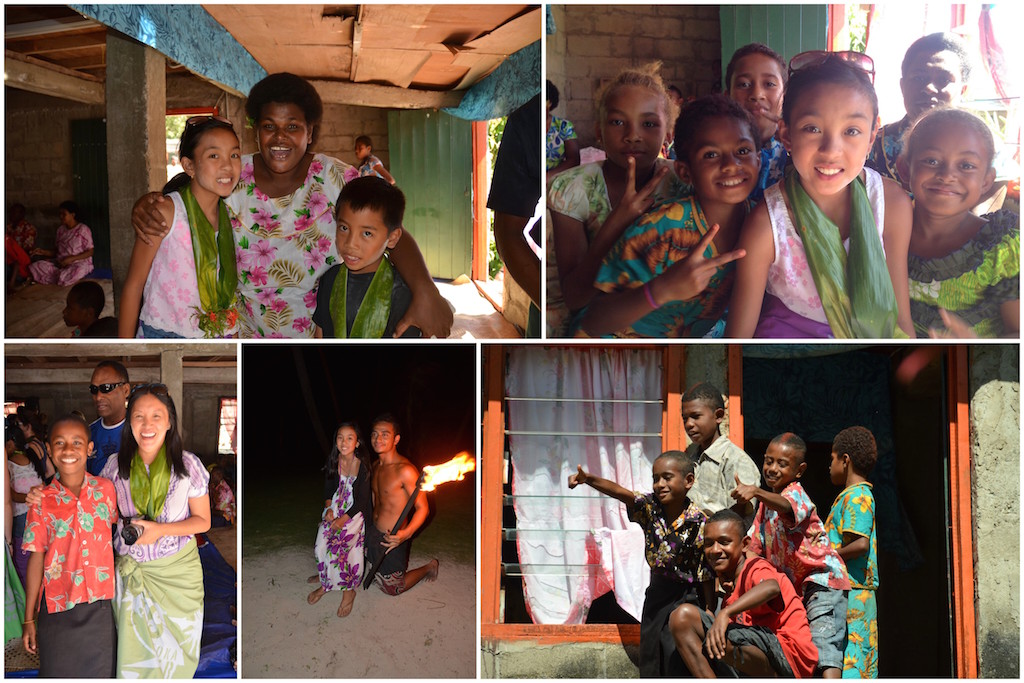
The Fijians are some of the friendliest people we have ever met. They’re very hospitable and welcoming. We were repeatedly greeted warmly while walking around downtown Nadi welcoming us to Fiji and asked where we were from by locals who weren’t trying to sell us anything. It may have helped to have the kids in tow.
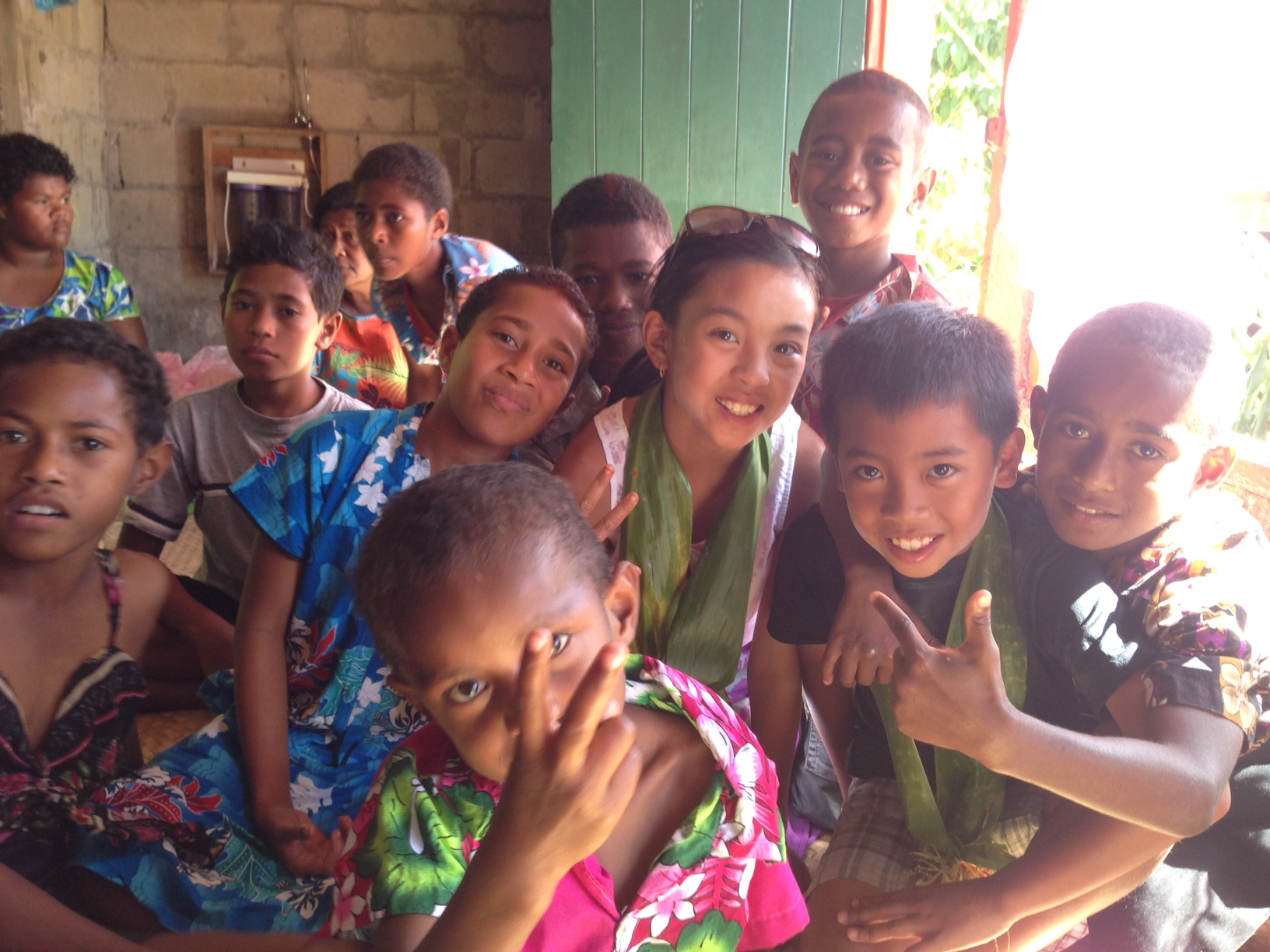
Where is Fiji?
2. Is Fiji a country? Fiji or Republic of Fiji is actually an island nation with about 332 (though some sources have said 333) islands and 110 are inhabited.
So, there is no actual and lone island called Fiji. It is a nation of many islands. About three quarters of the over 800,000 people live on its largest island of Viti Levu. Suva, its capital city, is also located here.
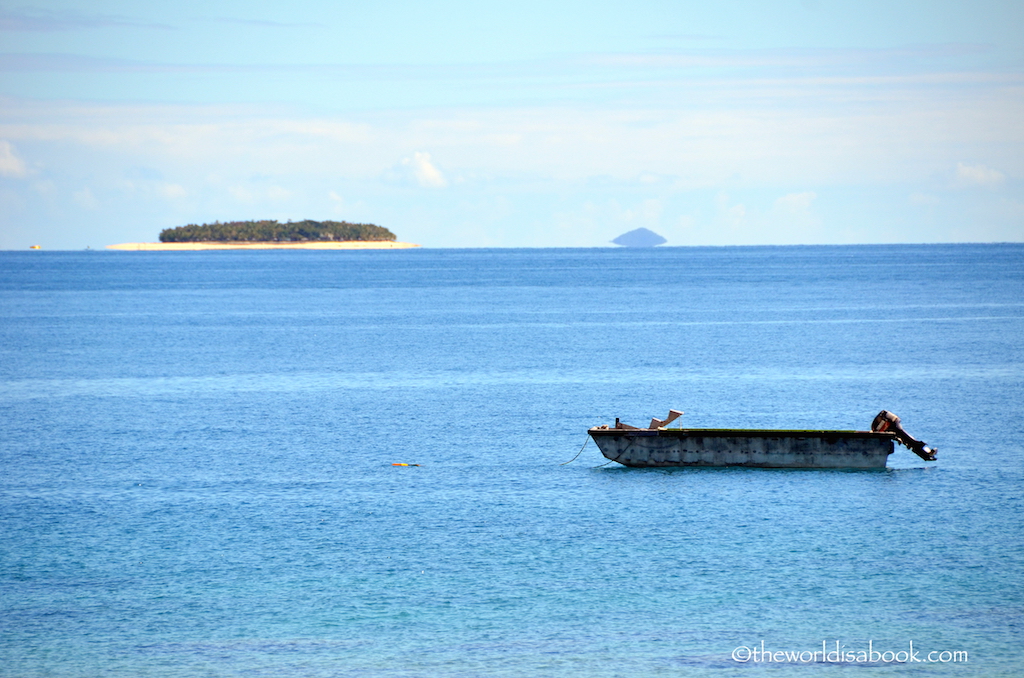
Surprisingly, its islands are mostly mountainous with rainforests in addition to its beautiful beaches. One local welcomed us to “Fun In Jungle Island” which we never would have thought of as an acronym for Fiji. We were only able to visit three of the islands and would love to return soon to island hop.
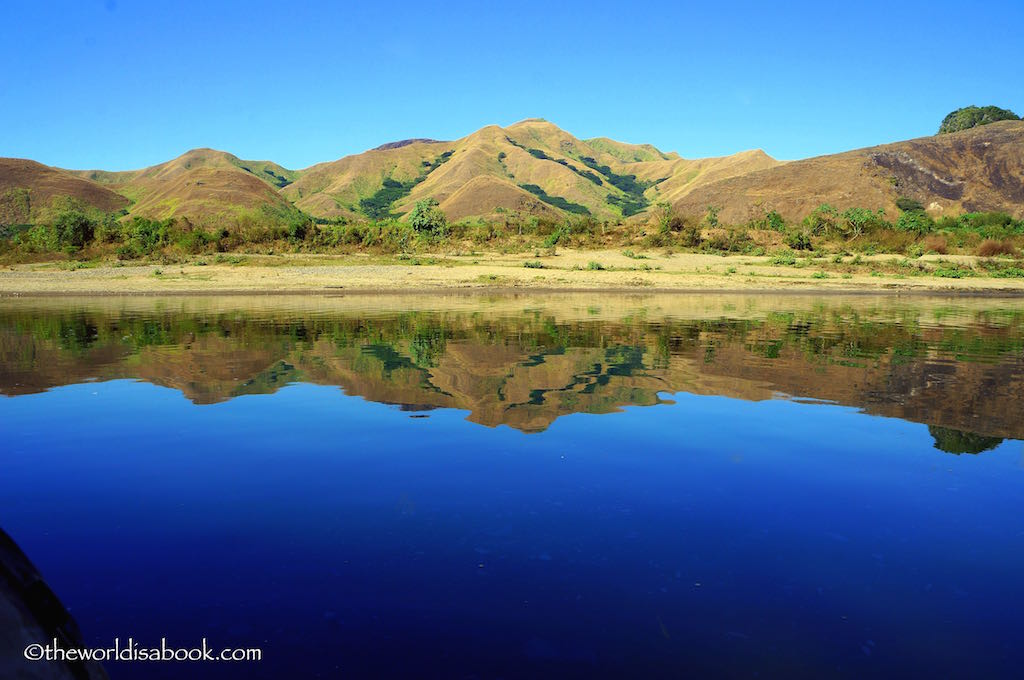
History and Demographics
3. Fiji was a British colony for 96 years and finally gained its independence in 1970. There are still remnants of its past throughout the islands.
The Union Jack is still present on the country’s flag along with its coat of arms. Though, there have been talks of changing the flag to reflect Fiji’s identity. Images of Queen Elizabeth II are also on its bank notes and coins.
4. Indians and Indo-Fijians make up over 40% of Fiji’s population. Most of them are in the main island of Viti Levu. Indentured laborers from India came to work on the sugarcane plantations during the British rule from 1879 – 1916.
Many individuals chose to remain and become farmers and businessmen after the elimination of the indentured system. The Fijian-Indians on the island now are mostly descendants of the laborers.
5. The Indo-Fijians are mostly Hindu and the native Fijians are mostly Christian. The largest Hindu temple in the Southern Hemisphere is the very colorful Sri Siva Subramaniya Temple located in Nadi.

6. Fiji has three official languages – English, Fijian (with over 200 different dialects) and Hindustani. Locals told us that they learned English in schools so most Fijians speak English. Though, they pronounced words like Nadi (the city and international airport) as “Nan-di”, Sigatoka (the river and town) as “Sing-a-toe-ka”.
7. Over 80% of Fiji’s land is called Native Land which is owned by village groups used for its village site and as a reserve. Only about 10% of its land can be leased, transferred or purchased. But, this also restricts the land quantity owned by Fiji’s non-residents.
Indo-Fijians who have been here for many years must lease lands to farm from the indigenous Fijians. This has, of course, caused conflicts and boycotts through the years.
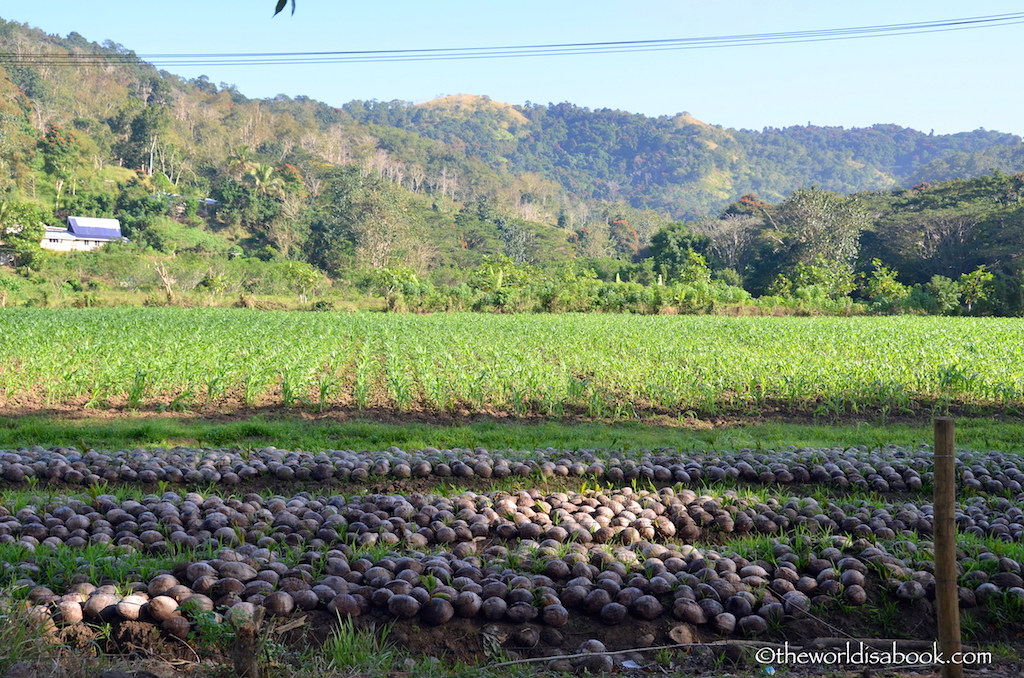
Drinking Kava and the Ceremony
8. Kava or Yaqona (pronounced “Yangona”) is Fiji’s traditional and national drink. It is made from the powdered root of a plant from the pepper family. They then mixed it with water in the traditional bowl called tanoa.
The resulting brown, muddy-looking substance might not have the most appealing appearance, but it is believed to possess medicinal qualities. These include treatments for stress, anxiety, insomnia, headaches, and the common cold, among other things.
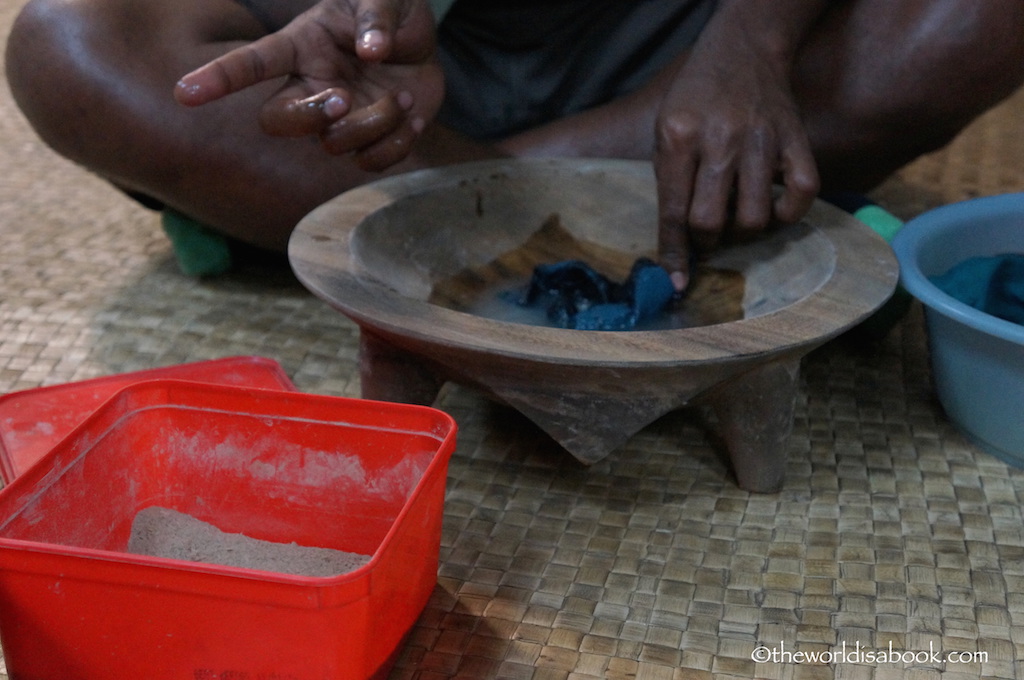
It has common descriptions of a bitter, earthy, tongue-numbing and unsweetened coffee taste. It’s an acquired taste which my husband enjoyed. He said the mix he had in the village we visited was a lot stronger than the one we tasted in downtown Nadi.
My kids are a little more blunt and said it tasted like “dirt”. We decided not to pursue the conversation on how they knew what dirt tasted like. Though, I was so glad the kids participated in the rituals and didn’t refuse to drink the kava.
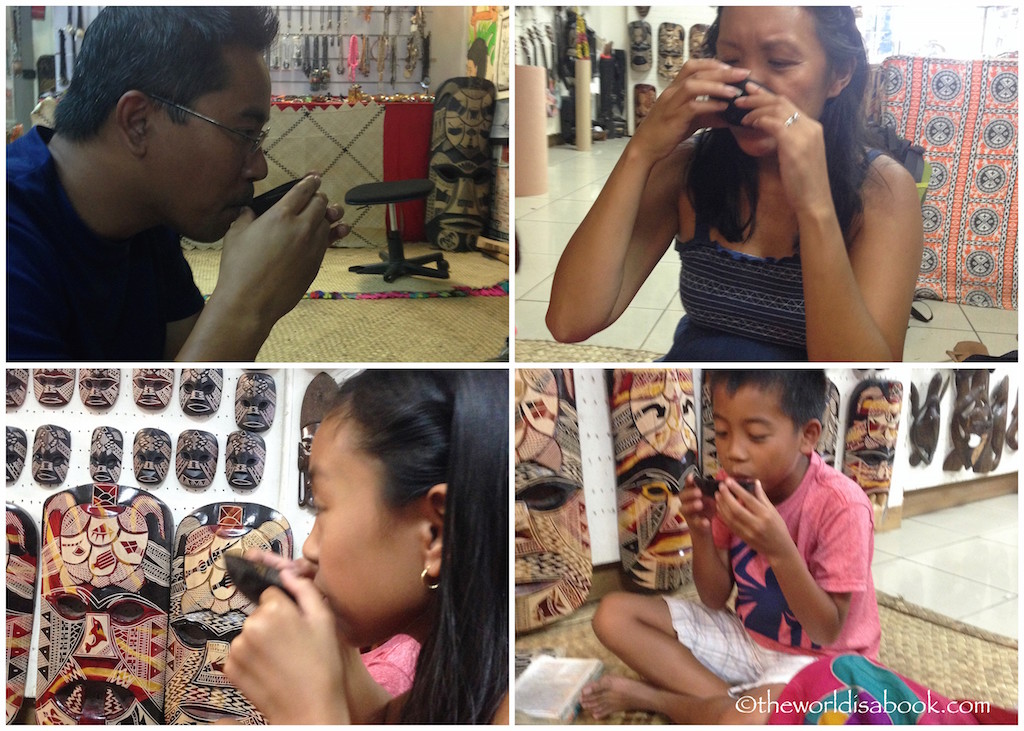
9. There’s a whole ritual to the Kava ceremony. We witnessed three of them and participated in two. Participants sit in a circle on a floor. Then, they put the tanoa in front of the leader to mix the kava. Guests must clap before and after drinking from the cup or bilo with one shot.
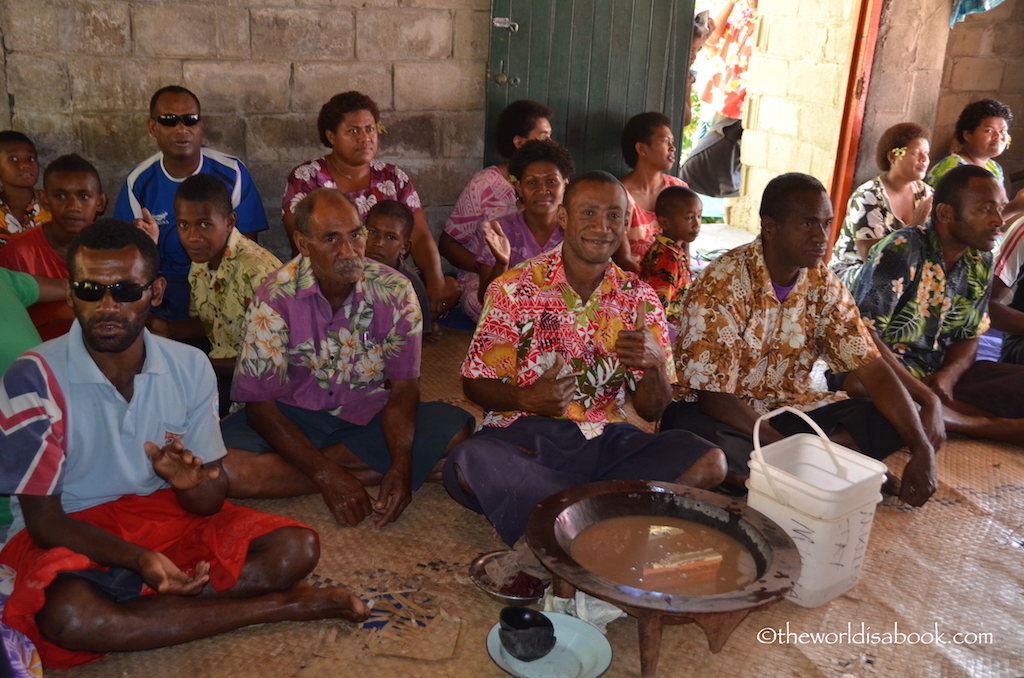
10. Cultural Village Visits: We highly recommend visiting a Fijian village to get an insight into their fascinating culture. We were lucky enough to visit one village and it was one of our most memorable travel experiences. Villages are self-sustaining, have a community center and a chief or leader.
11. Visitors must bring gifts of kava (in root or powder form) and present it to the chief for the “sevu sevu” welcoming ceremony. Women must wear modest clothing including covering legs with a sulu (Fijian sarong). The villagers further welcomed us with white talc powder on our faces and leis made of leaves and flowers.

12. Visitors must also remove hats in the chief’s presence and during ceremonies. We also had to remove our shoes before entering homes and buildings when visiting the village.

Sports and Celebrations in Fiji
13. Rugby is like a religion here. This team sport with origins in England is the national sport. We saw plenty of the teams’ merchandise from the airport shops to several souvenir stores.
Fiji has the “highest player-population ratio” of all nations playing the sport. The Fiji rugby team performs the Cibi (pronounced “thimbi”) which is a war dance before matches.
14. Firewalking Ceremony. The art of walking barefoot on smoldering hot stones originated about 500 years ago in the Sawau tribe on Bega Island off the coast of the main island. The natives still practice this fire walking ceremony, which has been passed through generations.
However, they have transformed the entire ritual and tradition into cultural shows that appeal to tourists. You can find fire-walking performances in some resorts and hotels across the islands. We witnessed the fire walkers during a night cruise to Robinson Crusoe Island and it was still pretty amazing to see.
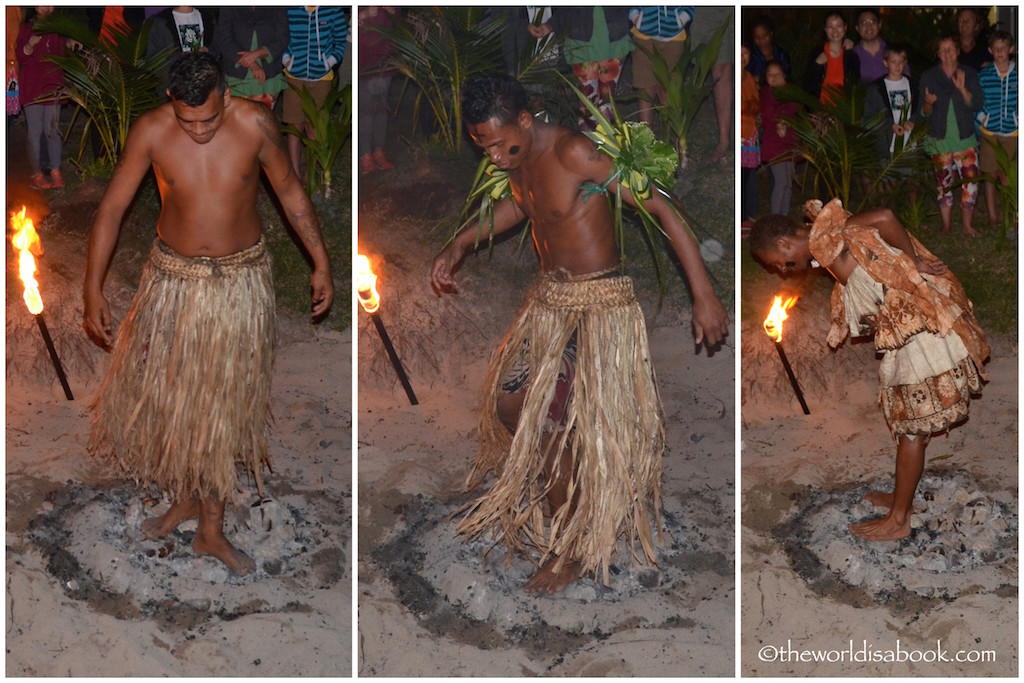
15. Local food is always a joy to sample when traveling. Fijians use Lovo Pits or underground ovens as a traditional method of cooking. They bury some food under hot coals using banana leaves or palm fronds.
They place marinated meats and fish at the bottom, with root crops like cassava, taro, and yams on top. We saw the unearthing of the lovo pit. But, we weren’t quite sure if they served us part of the food during our dinner.

16. The Meke is a celebration of Fiji’s culture through traditional dance and storytelling using songs. It was a way to pass on traditions and stories through generations. It involves a collaborative effort between men and women. Men are supposed to portray masculine gestures, while women exhibit soft and feminine qualities.
These performances are mainly carried out during festivals and celebrations, but they are more frequent during cultural shows at resorts. Don’t miss seeing a meke when visiting.
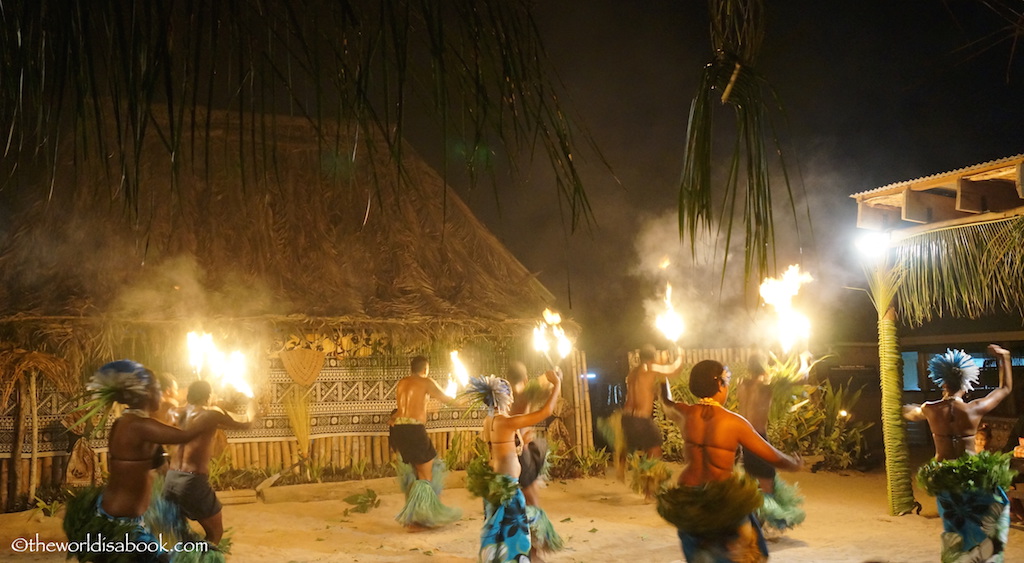
17. Fiji was once known as part of the “Cannibal Isles”. Cannibalism existed here until the Christian Missionaries arrived in the mid 1800s. The belief is that cannibalism originated from long sea voyages with limited survival options. They brought these practices to the islands.
The last known Fijian cannibalism victim was a missionary named Rev. Thomas Baker. He and his colleagues visited the Nabutautau village to convert the natives into Christianity.
For some reason, Rev. Baker ended up touching the village chief’s head which was a huge, forbidden act and considered an insult. His one remaining shoe is on display at the Fiji museum in the capital city of Suva.
18. Cannibalism Souvenirs. Believe it or not, they actually sold souvenirs that resembled tools used during the cannibalism days like a brain picker, club and cannibal fork. You can also get a cannibal man doll. My husband was very tempted to buy one but we didn’t get any.

19. The Sigatoka River is 75 miles (120 km) long and winds through Fiji’s interior. It is a vital source of life for the Fijians and the over 50 villages along the river. It’s the source of some of their food, their main irrigation system source and used for transportation.
We cruised on this river through the Sigatoka Valley on the main island of Viti Levu, which is considered Fiji’s salad bowl. Over 70% of Fiji’s produce comes from this valley and mainly sold to Australia and New Zealand.
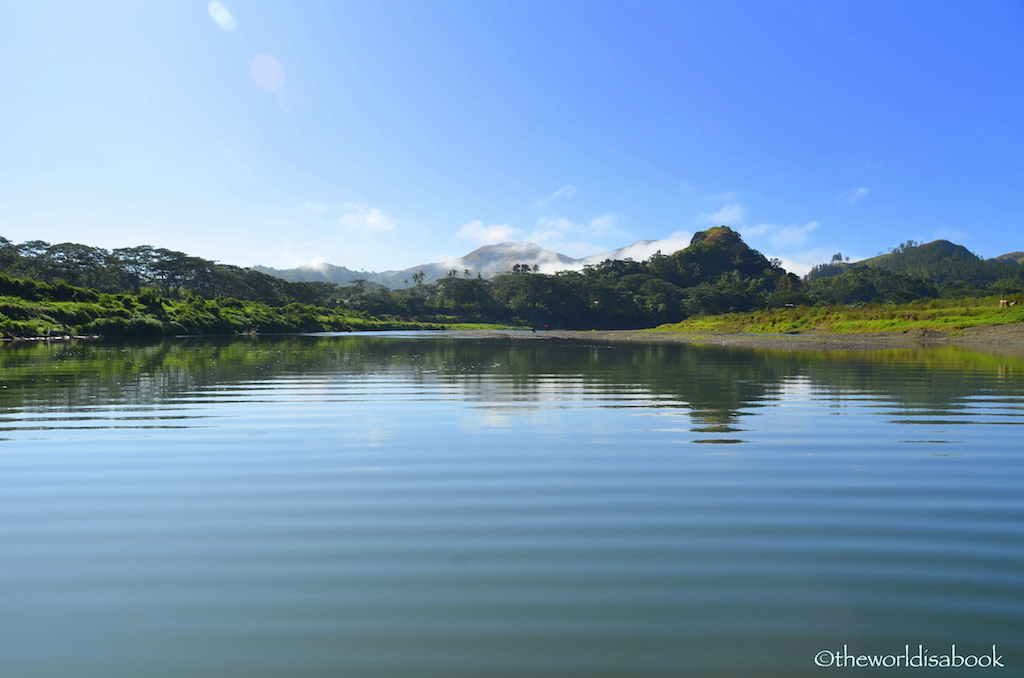
20. FIJI water. This popular brand of bottled water marketed as “Earths Finest Water” really does come from Fiji and they were everywhere. Although, I didn’t notice a significant price difference or the bottled water tasting better there.
My daughter got a kick out of actually drinking Fiji water in Fiji. She regrets not taking any picture with any of the bottles she drank while there.
21. Where is Fiji? Fiji is located on the International Date Line which is the imaginary line in the Pacific Ocean that splits consecutive calendar days and where one day begins and another ends. There is a marker in the island of Taveuni where visitors can have one foot, arm, etc. on today and the other half on yesterday.
One can also jump from today and yesterday which would have been a pretty neat idea! Unfortunately, we were short on time so this will have to wait on a return trip.
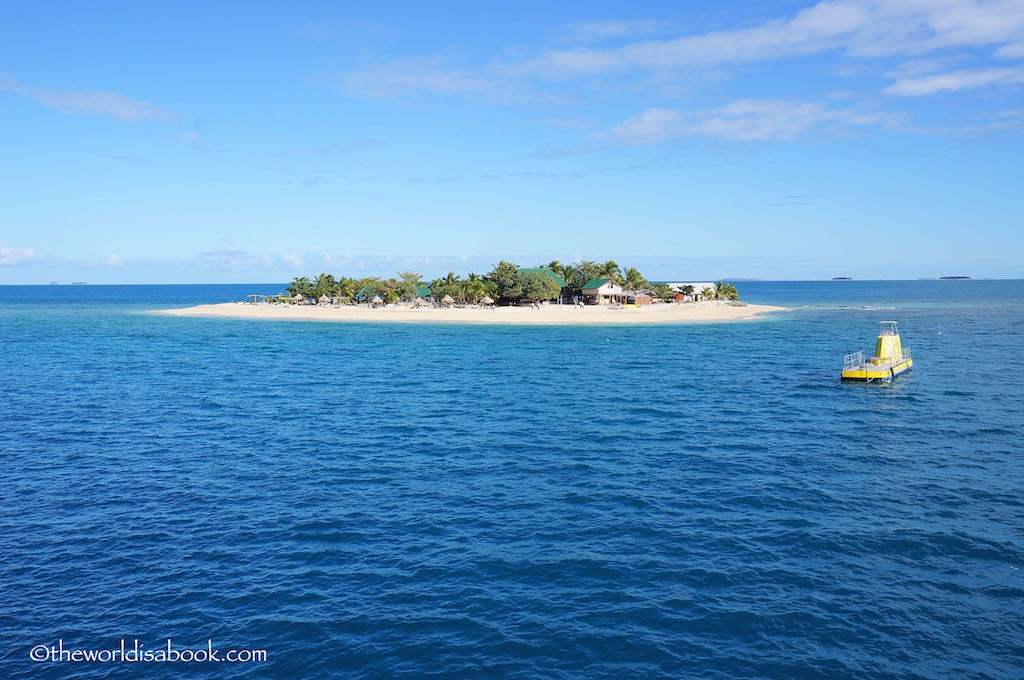
22. Hidden Gems in Fiji Islands. Some of Fiji’s islands have distinctive personalities. It’s another great excuse to island hop.
*Taveuni Island – Garden Island: Visit Taveuni, known as the “Garden Island” for its lush vegetation and abundant flora.
*Yasawa Islands: These remote and beautiful islands offer a tranquil escape with picturesque beaches and crystal-clear waters.
*Beqa Island – Shark Diving: Brave souls can experience thrilling shark dives in Beqa’s Shark Reef Marine Reserve.
*Modriki Island – Castaway Movie: Visit Modriki Island, famous for being the filming location of the movie “Cast Away” starring Tom Hanks.
*Mamanuca Islands: The Mamanucas offer stunning luxury resorts, water sports, and amazing opportunities for island hopping.
23. Tapa Cloth: Tapa cloth, or “masi,” is made from the inner bark of the mulberry tree and adorned with intricate designs using natural dyes and stencils. The locals use it for ceremonies, as clothing, and for decorative purposes. During special events and ceremonies, tribes or villages exchange tapa cloth as a gesture of goodwill and friendship.
24. Huts and Bures: Traditional Fijian huts and bures (pronounced bur-ray), which are wood huts with a straw or thatched roof. Locals build bures in villages preserving architectural customs. Though, there are also some hotels that offer stays in oceanfront bures on some islands.
25. It’s Fiji time. We repeatedly heard, “Don’t worry, you’re on Fiji time”. Growing up in the island of Guam, I’m familiar with the laid back lifestyle and the concept of island time.
Things move a little slower and sometimes, set times are mere suggestions. There’s an unhurried, relaxed vibe here so expect it and enjoy it. After all, who wants to be in a rush when in Fiji?

Tips for Visiting Fiji
- Nadi Airport is where most international airplanes land. It was surprising to find that it was quite small for an international airport. Immigration with multiple planes coming in can be harrowing. There were also not that many shops or eating outlets within the airport.
- Fijians drive on the left side of the road (like the British and Australians) and what we Americans call “the other side”.
- Denarau Island is a near the Nadi airport and the port/marina that takes visitors to the outer islands. If you’re looking for the name brand hotels like Sofitel, Wyndham and Hilton, they’re all located in this man-made island.
- Fiji Airways is the national carrier. Check for free stopover promotions that include accommodations or for a small additional cost on a multi-city itinerary on your way to New Zealand or Australia from North America. We paid less than $100 extra per ticket due to taxes on our ticket from Los Angeles to Brisbane for stopping in Fiji for a few days.
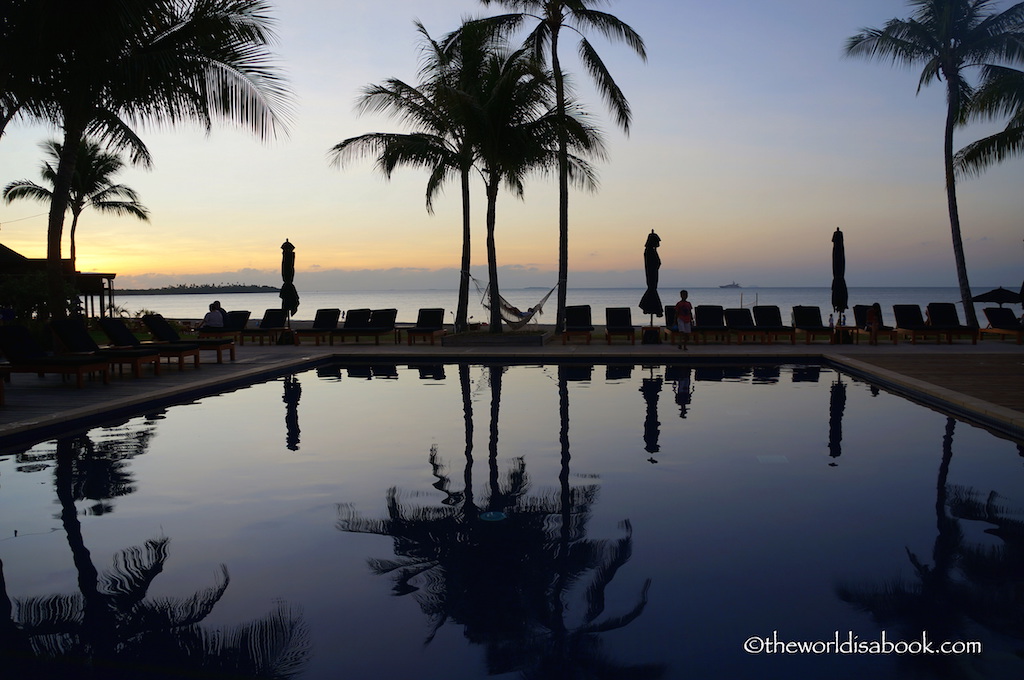
The World Is A Book contains affiliate links and is a member of the Amazon Services LLC Associates Program. If you make a purchase using one of these Amazon links or any of the product links, we may receive compensation at no extra cost to you. See our Disclosure Policy for more information.
Book these other Fiji tours
Related FIJI Posts:
Pin it for later!

Interesting….
very
BULA, Mary!! This was an awesome post! I could most definitely use a nice big Kava drink right now. Actually make a double – I have some stress and anxiety right now. Oh my gosh I would love to participate in that dinner at the fire pit…and eat the delicious food! So, with some 200 different Fijan dialects are a lot of those specific to the individual 332 islands?? Love your pictures always and have a great weekend! :)
Bula! Thanks Mike! I’m not sure about the dialects bt it makes things more complex. Glad you enjoyed learning about Fiji.
This looks absolutely amazing. What a great experience!!
It was..thanks Ester!
Very comprehensive report about Fiji. We visited the islands back in 1998 and I remember being stunned by height of the Fijians. They seemed like giants to me. Another shock was their greeting “Bula” which resembles very much a dirty word in Romanian, which made us burst into laughter every time we were greeted by them. You are doing a great job exposing your children to all these cultures. As for souvenirs from the cannibalism days, I think I’d pass.
Thanks Anda! What a great story about Bula. Come to think of it..the Fijians are a lot taller than other Pacific Islanders.
Wow! Never knew so many Indians inhibit Fiji, the temples look grand!! Some really eye opening facts here, lovely pictures too :)
Thanks Arti! Glad you enjoyed it.
Talk about paradise, it looks absolutely gorgeous!! What was the food like, I started drooling just by reading your description!
Thanks Vlad! There was quite a bit of seafood, some mixture of Indian food. They also have food cooked in underground ovens.
Absolutely gorgeous!! Can’t wait to explore Fiji ourselves in 2015 once we move to New Zealand in a months time! Thanks for sharing such a wonderful travel story with beautiful images :-)
Thanks Samiya! Lucky you! Looking forward to see where you travel to in Fiji.
Great post! Very well written and the pictures are so lovely! :)
I almost feel the warmth and sunbeams on my skin when watching it :)
This is so interesting! I really didn’t know that much about Fiji before, other than it is a tropical paradise. I’ve heard kava is really good for you. I didn’t know there were over 300 islands! It sounds like a great place to incorporate into a flight to Brisbane for sure. And drinking Fiji water in Fiji is pretty funny :)
Absolutely gorgeous. I hope to make it to Fiji sometime, and your description of its diversity makes me long to visit even more. I love the idea of jumping from one day to your next, and I laughed at your comment about wondering how the kids knew what dirt tasted like!
Wow. I would love to see Fiji. Very cool post.
Mary I’ve learned so much about Fiji from reading your post! It’s so far from me thaat I’m not sure I’ll ever make it there but I had no idea that there is such a prominence of people of Indian origin there and about the presence of Hinduism there. I also hadn’t realised just how many islands make up Fiji. This has been so informative! And those marinated meats with the taro/banana leaves used in the cooking sound delicious!
I’ve never been to Fiji, but my hubby did when he was a kid. I think it’s fantastic that your kids were good sports and tried the kava. My kids probably would have refused. However, they totally would have wanted to jump back and forth across the International Date Line. I can’t wait to read more about your visit to the Fijian village. It looks like a wonderful cultural experience.
I visited Fiji as a young child and vividly remember Suva’s Albert Park, watching tropical fish through a glass-bottom boat, and trying fresh sugar cane for the first time. My husband is so envious: He has wanted to dive there for ages. Must. Go. Back.
Hey Mary, Wish you and your family a very Happy New Year!! Loved travelling with you I’m 2014, happy travels in 2015 :)
Mary, I’m going to be honest, Fiji has never been high on my list. That is until I read your article. Now, I’m looking at tickets…it looks awesome! Great travel inspiration!
Fiji has been firmly on the list for years, but I havent made it thus far. Desperate to go !
What a wonderful plan, Karyn! We’d love to return to Fiji. Glad you had such a great time there.
Bula Mary. Kava does take like dirt (I’m a dirt aficionado). Where did you stay? I spent a memorable day at the Hotel Westin Denarau after having to make an emergency landing in Nadi. You’re rarely thankful for smoke in an airplane at 35,000 feet but…
Great to learn about all of the different cultural aspects of local life in Fiji. I’m planning a trip in December and I always love experiencing the local culture and people. This post gave me lots of great ideas!
I don’t ever comment on blogs, but I needed to say THANKS for this post! We are going to Fiji very soon and I love all your suggestions. Also, it’s nice to see things that are culture related and not just water sport related (not that there’s anything wrong with that, but there’s a lot written about that already).
Anyway, thanks again! I’m bookmarking this!
your mom
AHHHHHHHHHHHHHHHHH I EAT TURTLES
<3
Bula Vinaka!
Born in Suva, and proud to call Fiji my Home.
Previously described as “Fiji, the way the World should be!”
Visitors are most welcome to our homeland to enjoy the hospitality, nature, laid back lifestyle, delicious (organic) food,fun in the sun and of course Fiji Water (proudly bottled at source in Tavua)
Thank you and Vinaka Vakalevu!
That sounds really nice about the “BULA”. I found something similar in Bali and that all the locals just smile all the time. Also funny about “Fiji time”. I’ve experienced that in some destinations where you just wait forever to be served and get your food in an empty restaurant lol. Thanks for telling us about Fiji! Super interesting post!